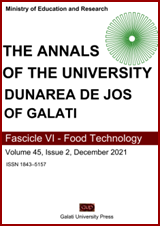Production of antioxidants through lactic acid fermentation: current developments and outlook
Abstract
Antioxidants are essential in maintaining physical health as they reduce the adverse effects caused by free radical attacks. Free radicals involve in many oxidation processes in the body and may lead to malfunctions of tissues, resulting in degenerative diseases. This article comprehensively reviews the possible mechanisms of lactic acid bacteria (LAB) in increasing the antioxidant capacity of fermented foods and the mechanisms of the resulted antioxidant compound in terminating oxidation chain reactions. During food fermentation, LAB could produce antioxidant compounds, increase their bioavailability, or perform both processes simultaneously. Phenolic compounds are the primary antioxidants in plant-based foods. LAB could improve the bioavailability of phenol-based antioxidant compounds by increasing the solubility, converting isoflavone glucosides to aglycones or both. In proteinaceous foods, LAB hydrolyzes parent proteins into smaller fractions, including peptides or free amino acids. Some peptides are known as bioactive peptides owing to antioxidant activity and hence, increase the antioxidant capacity of fermented foods. Exopolysaccharides (EPS) produced by LAB also show antioxidant activity. Production of organic acids, such as lactic acid and acetic acid, change the environmental pH that influences the radical scavenging activity of some compounds. An increase in antioxidant capacities of foods through LAB fermentation supports the development of fermented foods as a part of functional foods that can provide additional health benefits beyond their basic nutritional functions.


